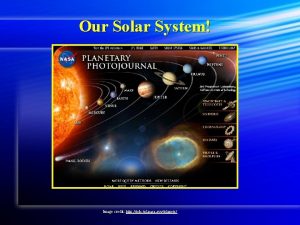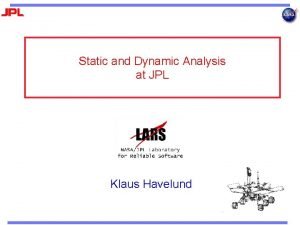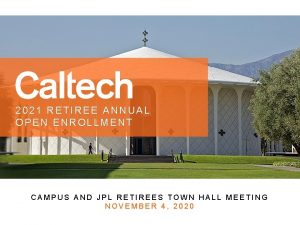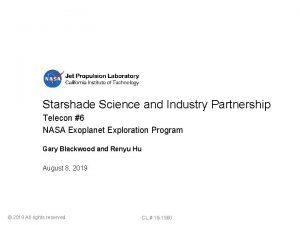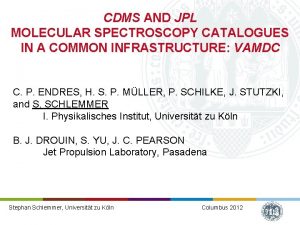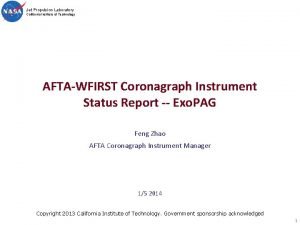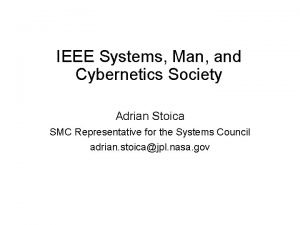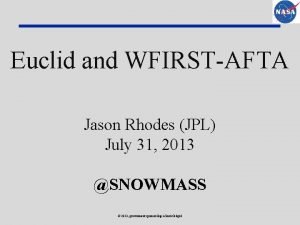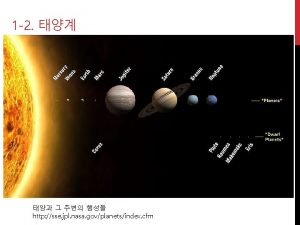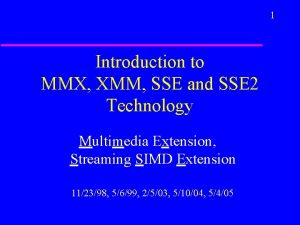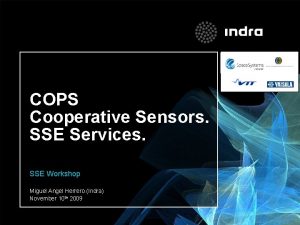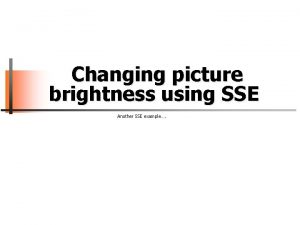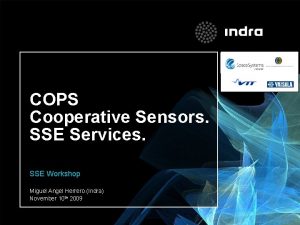1 2 SOLAR SYSTEM http sse jpl nasa









- Slides: 9

1 -2. SOLAR SYSTEM http: //sse. jpl. nasa. gov/planets/index. cfm

http: //nineplanets. org/thesun. html

Positions of the planets in our Solar System and their orbits around the Sun. http: //lunaf. com/english/live-data/solar-system-planets-orbits/

http: //en. wikipedia. org/wiki/Asteroid_belt Asteroids The inner Solar System, from the Sun to Jupiter. Also includes the asteroid belt (the white donutshaped cloud), the Hildas (the orange "triangle" just inside the orbit of Jupiter), the Jupiter trojans (green), and the near-Earth asteroids. The group that leads Jupiter are called the "Greeks" and the trailing group are called the "Trojans" (Murray and Dermott, Solar System Dynamics, pg. 107).

http: //www. mira. org/fts 0/planets/102/text/txt 001 x. htm Comets http: //deepimpact. umd. edu/gallery/orbits 3. html

Some significant features of our solar system 1. The Sun occupies 99. 8% of the total mass, while having only 2% of the total angular momentum. Most of the angular momentum is on the planets. 2. All the planets revolve around the Sun in the same direction along elliptical orbits on a roughly same plane 3. Most of the planets rotate to the same direction as the revolution (exception: Venus, Uranus) 4. The planets array in a regular manner – following so called “Titius-Bode rule”. 5. Planets grouped into 1. Inner planets, terrestrial planets: Mercury to Mars 2. Outer planets, major planets: Jupiter to Neptune

http: //en. wikipedia. org/wiki/Titius_Bode

Theories of Solar System Formation 1. Nebula theory: Kant, Laplace 2. External forces theory: Buffon, Chamberline, Moulton 3. Neonebula theory: Weizsacker, Anders, Owen http: //en. wikipedia. org/wiki/Solar_system_formation http: //www. youtube. com/watch? v=RT 4 OO 0 TFLHw

